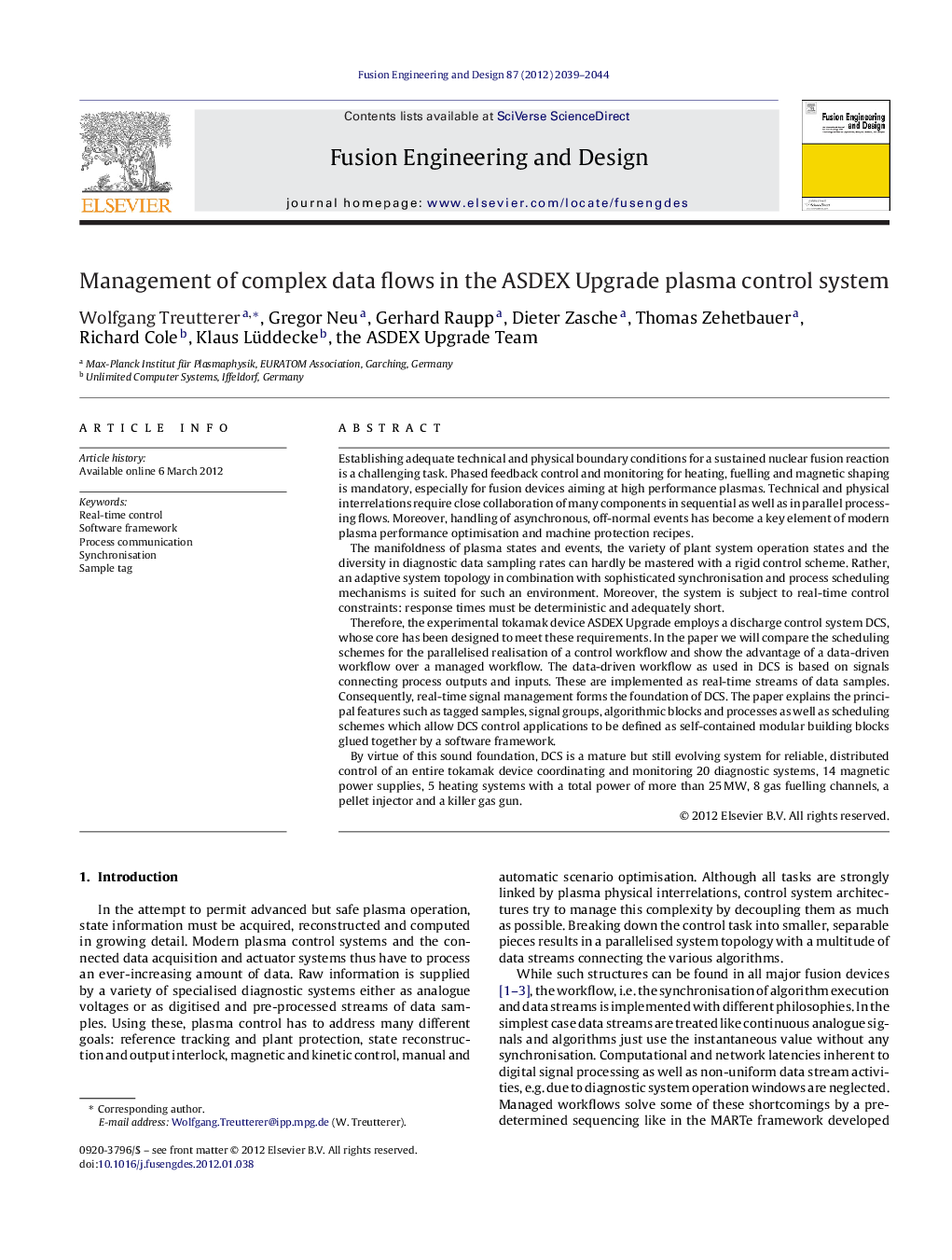| Article ID | Journal | Published Year | Pages | File Type |
|---|---|---|---|---|
| 271319 | Fusion Engineering and Design | 2012 | 6 Pages |
Establishing adequate technical and physical boundary conditions for a sustained nuclear fusion reaction is a challenging task. Phased feedback control and monitoring for heating, fuelling and magnetic shaping is mandatory, especially for fusion devices aiming at high performance plasmas. Technical and physical interrelations require close collaboration of many components in sequential as well as in parallel processing flows. Moreover, handling of asynchronous, off-normal events has become a key element of modern plasma performance optimisation and machine protection recipes.The manifoldness of plasma states and events, the variety of plant system operation states and the diversity in diagnostic data sampling rates can hardly be mastered with a rigid control scheme. Rather, an adaptive system topology in combination with sophisticated synchronisation and process scheduling mechanisms is suited for such an environment. Moreover, the system is subject to real-time control constraints: response times must be deterministic and adequately short.Therefore, the experimental tokamak device ASDEX Upgrade employs a discharge control system DCS, whose core has been designed to meet these requirements. In the paper we will compare the scheduling schemes for the parallelised realisation of a control workflow and show the advantage of a data-driven workflow over a managed workflow. The data-driven workflow as used in DCS is based on signals connecting process outputs and inputs. These are implemented as real-time streams of data samples. Consequently, real-time signal management forms the foundation of DCS. The paper explains the principal features such as tagged samples, signal groups, algorithmic blocks and processes as well as scheduling schemes which allow DCS control applications to be defined as self-contained modular building blocks glued together by a software framework.By virtue of this sound foundation, DCS is a mature but still evolving system for reliable, distributed control of an entire tokamak device coordinating and monitoring 20 diagnostic systems, 14 magnetic power supplies, 5 heating systems with a total power of more than 25 MW, 8 gas fuelling channels, a pellet injector and a killer gas gun.
► Control system architectures with data-driven workflows are efficient, flexible and maintainable. ► Signal groups provide coherence of interrelated signals and increase the efficiency of process synchronisation. ► Sample tags indicating sample quality form the fundament of a local event handling strategy. ► A self-organising workflow benefits from sample tags consisting of time stamp and stream activity.
